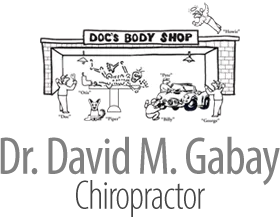
Should You Exercise After an Injury?
When your muscles and joints are sore and strained from an injury, hitting the gym probably doesn't seem like a very good idea. Although full-out workouts could potentially worsen your condition, moderate exercise may be just what you need to speed the healing process.
How You Can Benefit from Exercise
For years, doctors advised patients with injuries to take it easy. Unfortunately, after spending a week or two on the couch, many people found moving difficult. During the recommended period of rest, muscles stiffened and scar tissue grew. Creaky, stiff joints slowed recovery time and made it more difficult to complete everyday tasks.
The truth is that exercise may actually help ease aches and pains while also reducing the length of your recovery.
Exercise helps:
- Keep Your Muscles and Joints Limber and Flexible
- Reduce Inflammation
- Decrease Scar Tissue Formation
- Strengthen the Muscles That Support Your Joints
- Improve Range of Motion
- Enhance Balance
- Prevent a Re-Injury
- Improve Circulation
Things to Keep In Mind When Exercising
Check with your chiropractor before you begin exercising after an injury. He or she can advise you when it's safe to start working out again and recommend specific exercises. (If you have a heart condition, ask your cardiologist or family doctor if it's safe for you to exercise.)
Exercise after an injury involves gently working the injured area or keeping other areas of your body mobile and flexible if it's too soon to exercise a sore muscle or joint. If you hurt your ankle, concentrate on upper body exercises for a few days. Once your chiropractor approves, try adding walking, strengthening or low-impact aerobic exercises to your workout regimen.
Weight lifting is an excellent way to strengthen your muscles and help you avoid new injuries, but it should be approached with caution. If you don't decrease your usual weight load, you may worsen your injury. Start with light weights at first, and stop if you experience any pain. Talk to your chiropractor about the best way to begin or re-start a weight training regimen.
When back pain is the problem, exercises that don't strain your back or abdominal muscles or involve twisting can help keep your muscles and joints loose. Swimming, walking or riding a stationary bicycle can elevate your heart rate, improve blood flow, and increase mobility and range of motion. As healing progresses, your chiropractor may recommend exercises that strengthen and tone the muscles in your back and core.
In a study included in a systematic review published in Healthcare, low back pain sufferers who participated in aerobic exercise or strengthening exercises experienced a significant decrease in pain.
Chiropractic Care May Enhance the Effects of Exercise
Exercise is even more helpful when it's combined with chiropractic treatment. During treatments, your chiropractor may realign the vertebrae in your spine with hands-on manipulation. They may also use soft tissue mobilization or massage to loosen tight muscles and tendons.
During a systematic review conducted by the Ontario Protocol for Traffic Injury Management Collaboration, researchers discovered that soft tissue therapy offered an effective way to treat tennis elbow, carpal tunnel syndrome, and plantar fasciitis.
The effects of your treatment will last longer if you perform exercises to stretch and strengthen your muscles. Even minor muscle strains or stiffness can stress your back and alter the alignment of your spine, leading to pain, stiffness, and reduced range of motion.
It's important to exercise every day and only perform the exercises approved by your chiropractor. Don't increase the intensity or duration of your workout without approval. Starting a vigorous workout routine too soon can result in new injuries or worsening of your current injury.
Do you want to reduce your recovery time and learn the best exercises that won't further irritate your injury? Contact our office to schedule an appointment.
Sources:
SPINE Health: Exercise and Chiropractic Therapy, 3/14/13
